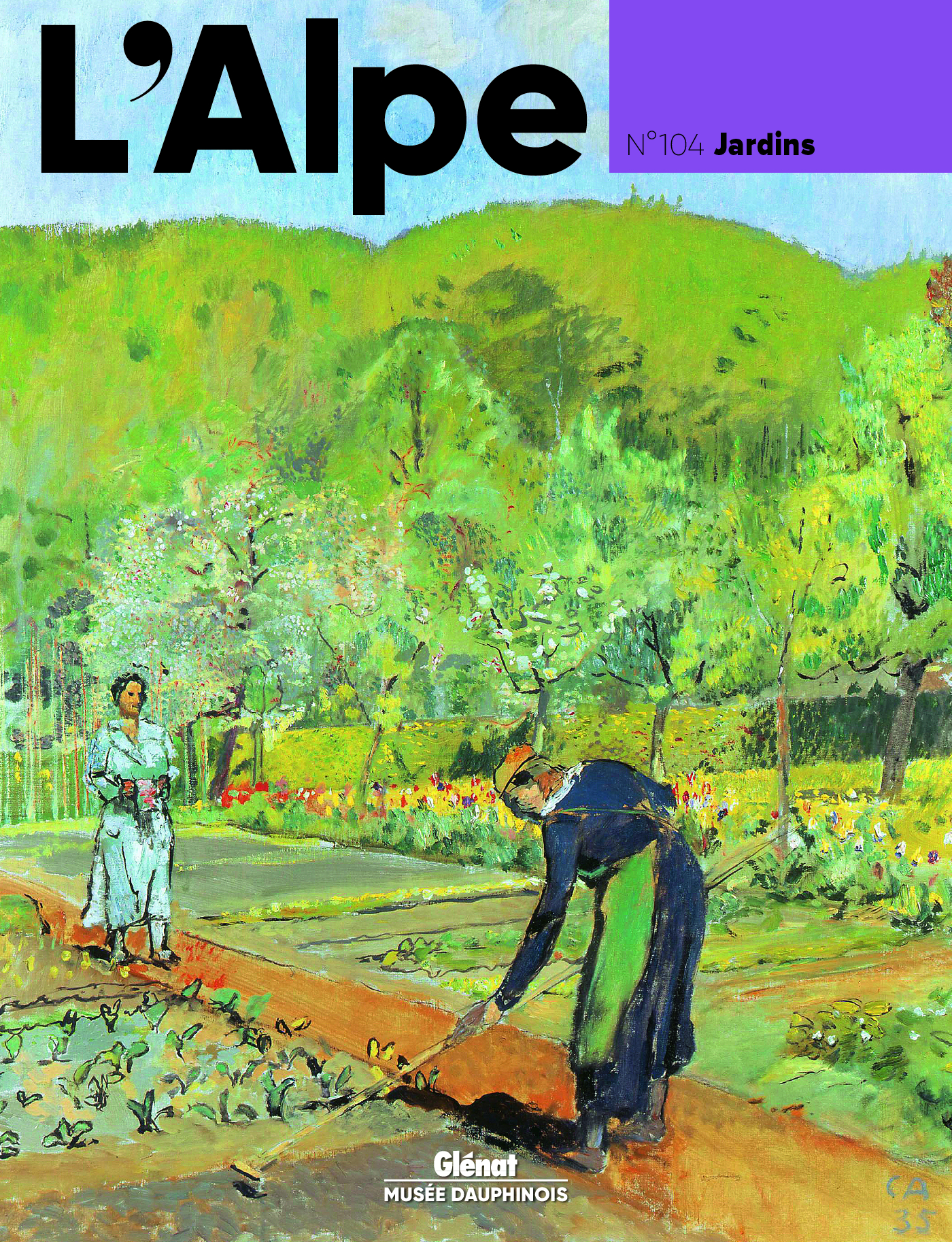Translations : Cary Bartsch
Written for people looking for information with meaning, L’Alpe is the first review devoted to the many cultures and heritages of Alpine Europe. Its ambition is to provide information, language barriers not withstanding. As your guide, L’Alpe looks at the people who, from the meandering Danube to the Rhône, have adapted to an exceptional climate. A cross between a book and a magazine, it draws on the first to provide background documents on a main theme, supported by rigorous analysis, an insistence on quality and the notoriety of renown authors. From the second, it adopts a quarterly rhythm for regular contributions to current debates, rich illustrations, the insatiable curiosity of its journalists and a necessarily didactic approach. Though rigorous in its approach to knowledge, L’Alpe is not a scientific journal. It calls on the contributions of history, geography, archaeology, ethnology, etc. to shed light on the meaning of the traces left by man on the mountain environment. And it is also open to current debates on the future of the Alps and other mountains in the world.
The Alps – for cows or sheep ? Enough of stereotypes
Is there a « natural » explanation as to how and why cows and sheep share the Alps ? Is their distribution over the Alps the fruit of random events or of certain necessities ? Of natural or cultural criteria ? Going beyond a number of clichés, a geographer takes a close look at the swirling mix of animals on the move, fluctuating according to the eddies of history and the passing of civilisations.
The wise man and the nomad
Why is sight of a grazing flock sufficient to calm our fears and assuage our doubts at the end of a century so rife with reasons to despair of mankind ? For the symbol it provides of a lifestyle apparently spared by the turbulence of history ? For the promise it holds of a life cycle that shall run its course and rebegin, come what may ? Or for the balanced relationship that man is still capable of maintaining with nature ?
F’Murrr, the Alpine « transhumorist »
F’Murrr is the author of the drawings on the cover flaps for this issue of L’Alpe. Echoing those drawings, Yves Frémion describes the slightly mad, highly surrealistic universe of the only strip author ever to have taken an interest in transhumance. Portrait of a monomaniac lover of the Alps.
Shepherds sleeping under the stars…
Why is the shepherd often portrayed playing the flute (or the bagpipes!) in Nativity scenes ? Jacques Lacarrière proposes here a surprising answer to this millenary mystery. He evolved this interpretation during a trip through the Cappadoce mountains.
Prows facing into the wind…
Two thousand years ago, tens of thousands of sheep patiently waited to start out on the trail to the summer Alpine pastures, huddled in protection against the Mistral in the large sheep barns of the Crau… That is the conclusion that may be drawn from recent archaeological digs that have completely modified our understanding of transhumances two thousand years ago. Were the roman settlers the ancestors of our Alpine shepherds ?
Transhumant populations and their historical impact
Starting in the 12th century, long-distance transhumances started in the Dauphiné mountains. The regular movement, back and forth, of men and animals, fluctuating like the tides, winter and summer, from the low plains to the high summer pastures, significantly influenced the lifestyles of Alpine populations, for centuries on end.
Travel notes from 15th century transhumances
The notes written from 1460 to 1480 constitute vivid accounts of the period. The records of Alzias Raouls, the livestock intendant for King René, the notes of Peyre Barruel, his bailiff and master shepherd, or the diary of Noé de Barras, a transhumance entrepreneur, cover the region of Aix and territories to the north and east. They allow us today to draw up a realistic scenario of a transhumance in Provence at the end of the 15th century. Lights, camera, action !
A new lease on life for the Sorède whip
In a small village in the Pyrenees, a working rehabilitation centre is continuing a centuries-old tradition in the manufacture of shepherd whips made of braided wood. Come along for a guided visit.
Shepherds words
Above all a calling, the work of a shepherd is a profession requiring a subtle mix of technique and instinct. More than ever before, shepherds have a vital role to play in preserving the identity of a menaced activity and they say so with passionate words that we are not often used to hearing…
A transhumance over ice and snow
Twice each year, long lines of sheep hesitantly pick their way over the ice and snow of the Tyrol. Starting out from the Alto-Adige in Italy, they courageously climb up to the Ötztal summer pastures, crossing snowbound passes at 3000 metres in their trip along trails used for over a thousand years. A relic of transhumances that Ötzi himself probably took part in.
Nomads from the Piedmont
Constantly on the move between pastures, certain shepherds from the Bielle region in Italy continue to lead their flocks in a never-ending transhumance. Their roamings lead them back and forth from the plains of Lombardy to the Alpine pastures. Though anachronistic and endangered, this activity continues today, against the tides of time.
The forgotten people of Pashmina
In the heart of the Ladakh region, a shepherd population continues their transhumance between the high Tibetan plateaux and the hills of Cashmere. Catherine Mangeot spent several mont


